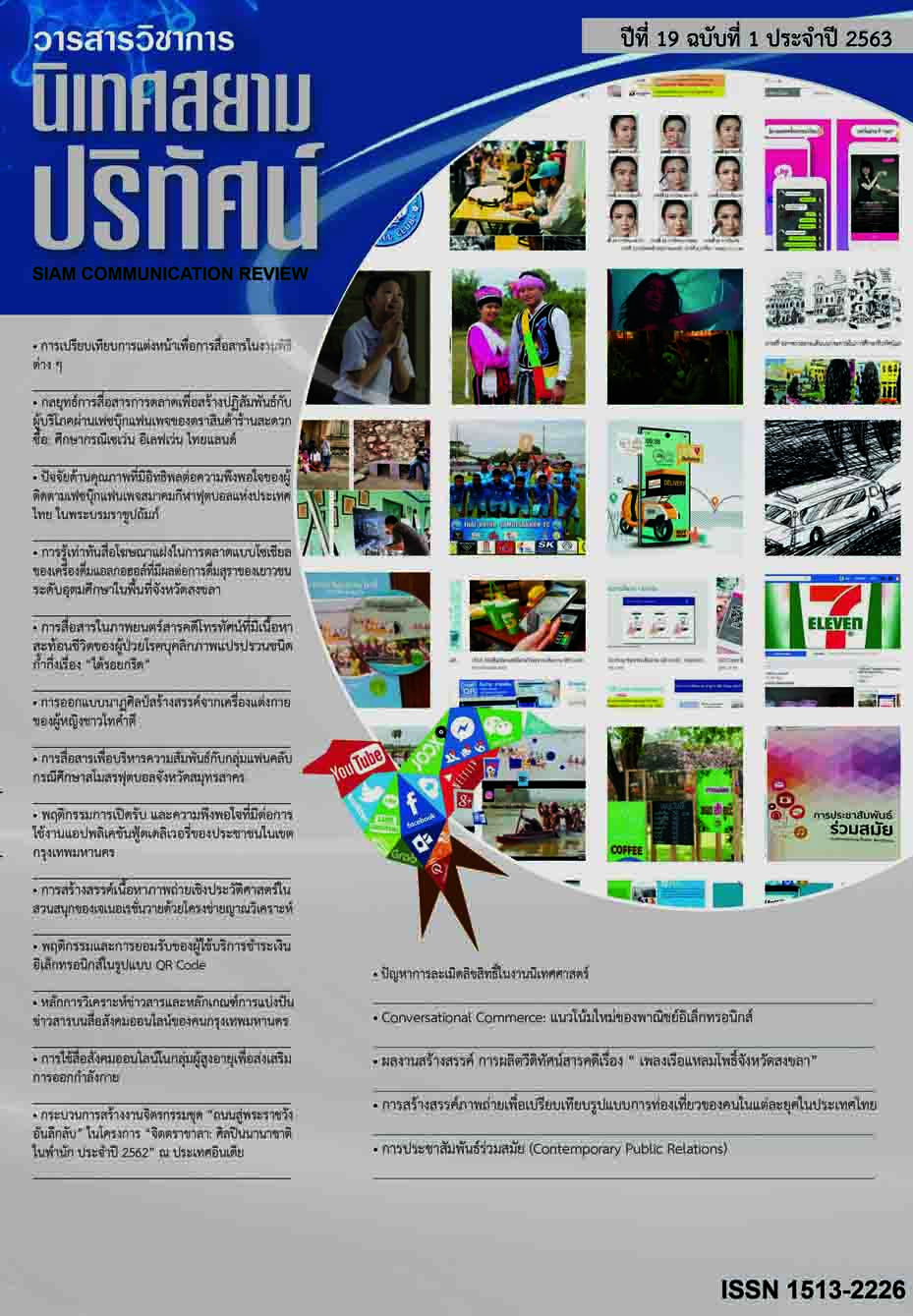Documentary Video Production: Creative Work Entitled “PlengRuaLaempho Songkhla”
Main Article Content
Abstract
PlengRuaLaempho Songkhla was registered as Thailand’s intangible cultural heritage at a national level under the domain of local media and performing arts in 2013. The song originated in ChakPhra Festival which was celebrated over 200 years ago. A boat-singing activity is annually organized at the end of Buddhist Lent, a special occasion in which “LakPhra” or “ChakPhra” (hauling the Buddha image processions) is performed across the river. Hauled from temples, all processions finally assemble at Ban Laem Pho, Bang Klam District, Songkhla Province. Those paddling the boats will sing in order to combat tiredness and create unity and alacrity. They also sing the boat songs on shore with paddles in their hands (at the assembly point on Laem Pho Beach). Nevertheless, the decline in popularity of the Laem Pho boat songs and ChakPhra Festival across Songkhla Lake Basin is found these days due to the development of land transportation routes, insufficient conservation, and younger generation’s inadequate realization. Without a serious conservation, these local songs could be in “crisis” and prone to be extinct.
This video work “PlengRuaLaempho Songkhla” is a creative work in the form of visual arts in the field of animation production (films or videos) under the project of assembling and restoring intangible cultural heritage of the country supported by Department of Cultural Promotion, Thailand’s Ministry of Culture. It has been filmed and produced to be used in ChakPhra Festival from 2017 to 2018. With 14.45 minutes range, this work is considered to be perfect in terms of pictures and sounds appropriate to be used as a learning material and model. Its contents reflect all dimensions of PlengRuaLeampho, such as their history, their importance, objectives of singing, singing occasions, their patterns, their elements, singers and their chorus, performers’ dressing, their prosody, their lyrics, singing and performing the songs, using the songs as local media, reflection of social angles in the songs, and ways for conserving them.
The creator of the work completely produced it himself: being a document script writer, director of photography, production controller, and video sequence editor. He has also worked with professional photographers in Bangkok. The video sequence was edited in a famous studio in Thailand. The work was produced in the form of DVD and widely disseminated to cultural departments at local and national levels, local administrative organizations, educational institutions, temples, and communities and people owning the heritage. Apart from this, the work has also been publicized using online media, such as websites and YouTube (i.e., https://youtu.be/VXG_DMB7ArU).
Article Details
References
ทีปวิท พงศ์ไพบูลย์ และคณะ. (2561). การเล่นเพลงเรือแหลมโพธิ์ จังหวัดสงขลา (โครงการรวบรวมและจัดเก็บข้อมูลมรดกทางวัฒนธรรม). สงขลา: กรมส่งเสริมวัฒนธรรม กระทรวงวัฒนธรรม.
พิทยา บุษรารัตน์. (2553). นาฏกรรมแห่งลุ่มทะเลสาบสงขลา การเปลี่ยนแปลงและความสัมพันธ์กับสังคม และวัฒนธรรมของหนังตะลุง และโนรา. กรุงเทพฯ: อมรินทร์พริ้นติ้งแอนด์พับลิชชิ่ง.
ภิญโญ จิตต์ธรรม. (2542). เพลงเรือแหลมโพธิ์ จังหวัดสงขลา. สารานุกรมวัฒนธรรมไทย ภาคใต้ (เล่ม 11). กรุงเทพฯ: ธนาคารไทยพาณิชย์.
สนิท บุญฤทธิ์. (2541). เพลงเรือแหลมโพธิ์. สงขลา. สงขลา: สำนักศิลปวัฒนธรรม สถาบันราชภัฎสงขลา.
สุธิวงศ์ พงศ์ไพบูลย์. (2542). เพลงเรือแหลมโพธิ์ จังหวัดสงขลา. สารานุกรมวัฒนธรรมไทย ภาคใต้ (เล่ม 11). กรุงเทพฯ: ธนาคารไทยพาณิชย์.
ภาษาอังกฤษ
Millerson, G., & Owens, J. (2009). Television Production. New York. Focal Press.


